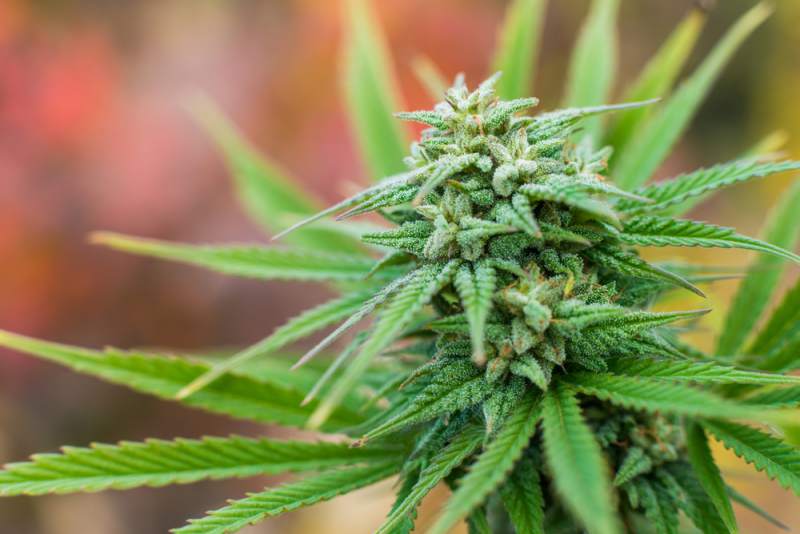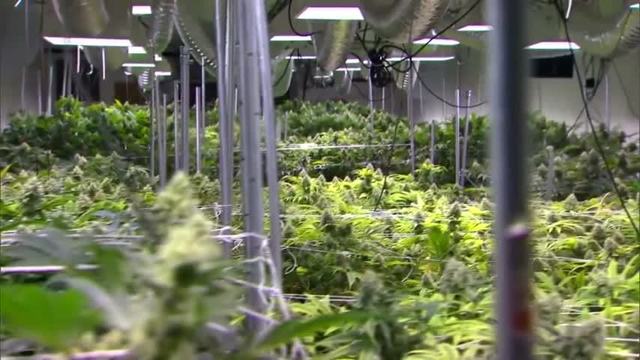Bismarck, ND – Jerrica Friedt lives with Multiple Sclerosis.
“I have lesions on my brain that make my hands numb. I get headaches. I’m tired and my feet start to drag,” she said.
She says she tried all different sorts of treatments. She claimed none of them truly helped except an illegal one.
“I was using cannabis illegally for two years. I told the neurologist and she was upset…So I went to an oral med,” Friedt said.
She says that medication also did not work.
“As soon as I lost my eye sight. That was my last straw.”
Two years ago, she moved from Dickinson to Montana where she could use medical marijuana legally.
Soon, North Dakotans will have legal access too. But there is still a lot to learn about the drug.
“The last time a report like this has been published was 1999,” Dr. Ziva Cooper, PhD, said.
Dr. Cooper with Columbia University worked on one of the most comprehensive research projects on cannibis. It was just released last year by the National Academy of Sciences.
“We actually had to look at 10,000 publications,” she said.
She said the publications were lacking.
“The overwelming majority of these associations were based off of evidence that has limited evidence or insufficient evidence,” Dr. Cooper said.
That includes studies on several conditions written into North Dakota’s recommended Medical Marijuana rules.
North Dakota approved the following conditions for medical marijuana treatment.
a. Cancer;
b. Positive status for human immunodeficiency virus;
c. Acquired immune deficiency syndrome;
d. Decompensated cirrhosis caused by hepatitis C;
e. Amyotrophic lateral sclerosis;
f. Posttraumatic stress disorder;
g. Agitation of Alzheimer’s disease or related dementia;
h. Crohn’s disease;
i. Fibromyalgia;
j. Spinal stenosis or chronic back pain, including neuropathy or damage to the nervous tissue of the spinal cord with objective neurological indication of intractable spasticity;
k. Glaucoma;
l. Epilepsy;
m. A terminal illness; and
n. A chronic or debilitating disease or medical condition or treatment for such disease or medical condition that produces one or more of the following: (1) Cachexia or wasting syndrome; (2) Severe debilitating pain that has not responded to previously prescribed medication or surgical measures for more than three months or for which other treatment options produced serious side effects; (3) Intractable nausea; (4) Seizures; or (5) Severe and persistent muscle spasms, including those characteristic of multiple sclerosis.
However, according to the National Academy of Sciences report, there were significant research gaps when studying Epilepsy, PTSD, Cancer, ALS and Spinal Stenosis. It also found medical marijuana is ineffective in treating Alzheimer’s and Glaucoma. Decompensated cirrhosis from Hep C, and Crohn’s Disease were not mentioned in the report.
Despite that research, all of those medical conditions made it into the suggested state law.
“When the states decided to pass laws for medical marijuana, they put forth a number of implications that weren’t necessarily rooted in the evidence,” Dr. Cooper said.
Evidence is lacking because marijauana is federally illegal, making it very difficult to study in a lab. But, as more states make it legal, the research gets better.
“Since July of 2016, there has already been a proliferation of good controlled studies,” she said.
Friedt already has the proof she needs.
“Ever since I started using the cannabis, I feel lifted. I feel normal. I feel happy,” she said.
And if she can get it here in North Dakota, she says she’ll move back home.
One potential danger of legalizing marijuana is an increased risk of car crashes. Research shows that states that have legalized marijuana have also seen an increased risk of traffic accidents.
The North Dakota Department of Health says that is typically seen in states that have legalized marijuana recreationally. Also, while other states have imposed a legal limit for marijuana similar to drinking and driving. In North Dakota, driving under the influence of marijuana is completely prohibited, even if it is prescribed.
“it could potentially be an issue. There’s not a whole lot of data in North Dakota on Marijuana use and driving impairment so that is yet to be determined,” Lt. Michael Roark with the North Dakota Highway Patrol said.
The Department of Health says traffic accident data is something it will track as the program is implemented.
On March 12th, there will be a legislative review of all of the proposed rules from the Department of Health. If those are approved with no revisions, they will all go into effect on April first.
Then, shortly after that, the state will open up an application period for people wanting to open a manufacturing facility.
“Once we go through the application process and have two applicants eligible to register, we’ll be able to identify a more firm timeline in regards to when dispensary applications will need to go out,” Jason Wahl with the ND Department of Health said.
Wahl says people could be able to get medical marijuana sometime between October and December of this year.
A study released last year shows medical marijuana could help curb the opioid epidemic.
A Health Professor at the University of California, San Diego studied hospitalizations in 28 states that have legalized medical marijuana.
The study found that once medical marijuana was made legal, hospitalizations due to opioid dependence or abuse dropped by 23%.
Hospitalizations due to opioid overdoses dropped 13%.
credit:myndnow.com













